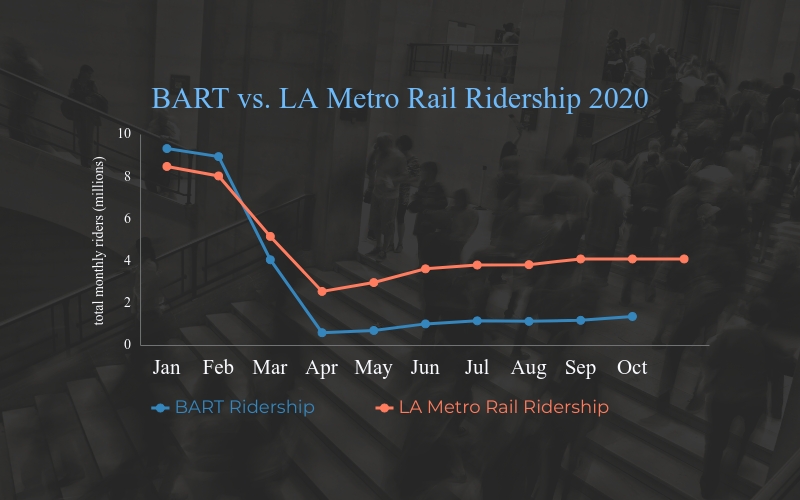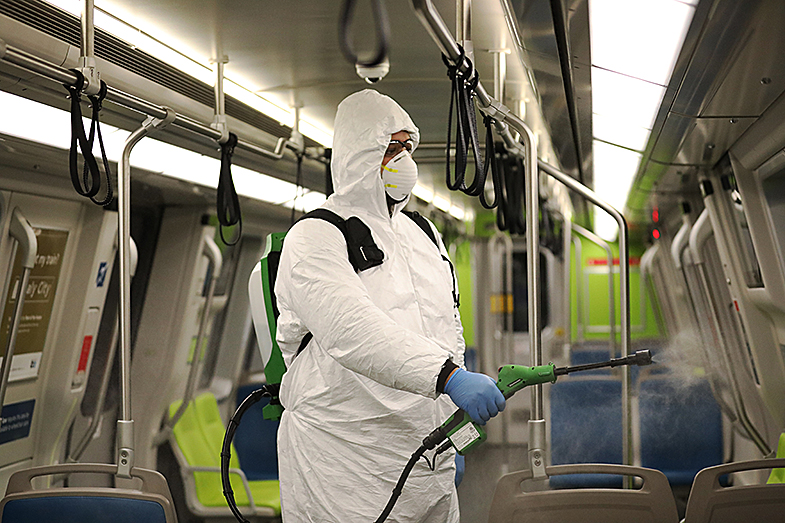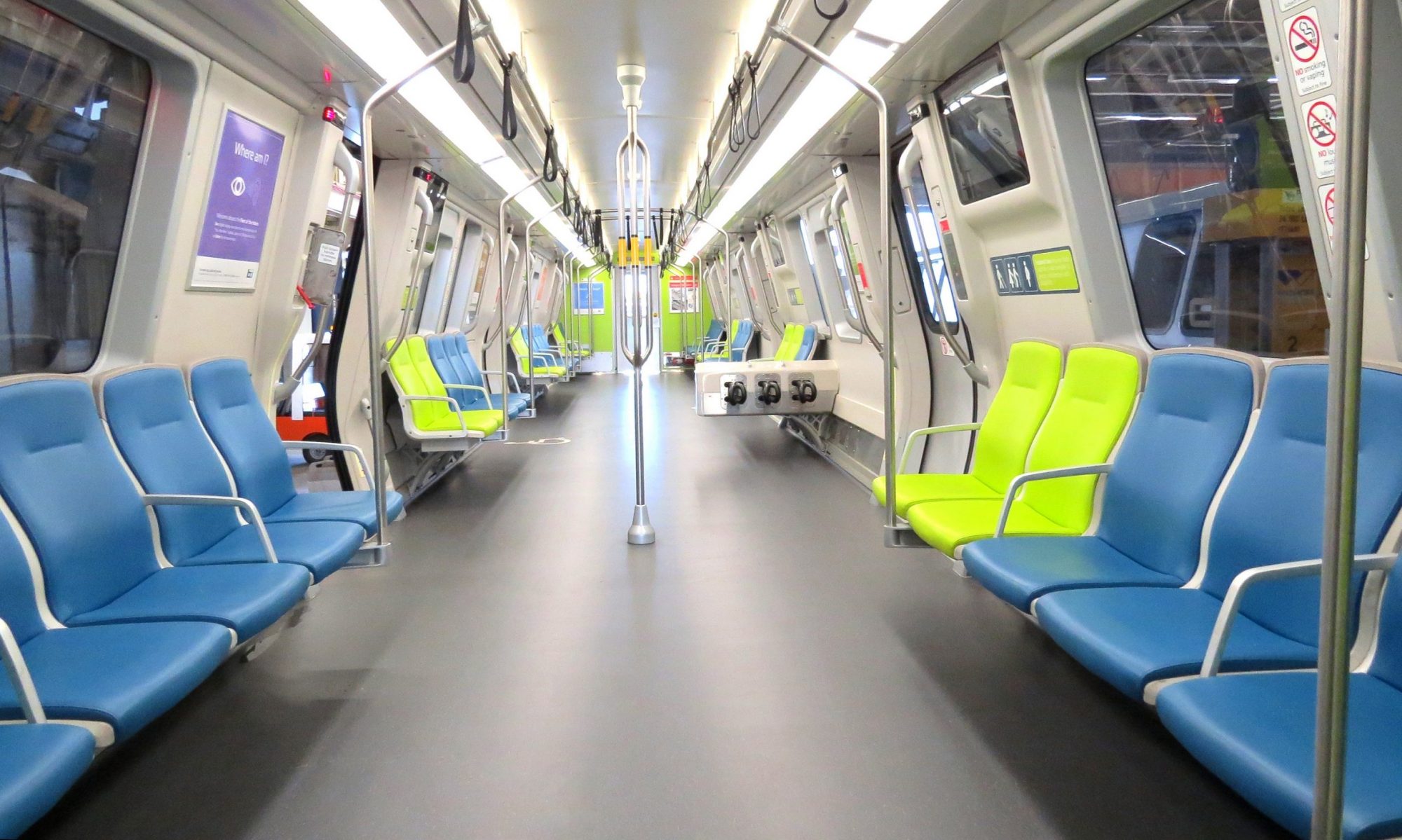Every morning, Norman Tiglao sits at the Exposition Line/La Brea stop in Baldwin Hills, Los Angeles, to wait for his train. Everyone is masked, and they keep their distance from each other. When the train arrives, they file in, and try to sit a few seats away from the next person.
“It isn’t any different, really. I hop on, sit in a seat and keep my hands to myself, and hop off” Tiglao said, “I’m glad it’s just less crowded nowadays.” He is an essential worker, and he never stopped taking the train, even when California Gov. Gavin Newsom issued the statewide stay-at-home order on March 19.
Of course, Tiglao’s sentiments of the safety of riding public transit aren’t shared by everyone — many outlets reported COVID-19 would be detrimental to transit — Time magazine went as far as saying it would be “apocalyptic.” Safety concerns about riding the bus or train flood transit agencies’ social media feeds. Some riders even called for transit agencies to shut down entirely, while others lamented that cut schedules left them stranded on the way home from work.
“Is this a bad joke? To be honest as a rider of metro I’d like to know how you all are disinfecting the metros trains and buses. I’d also like to know how you all are aiding social distancing. Are you adding more carts? Are you monitoring the distance of riders? This meme is weak!” tweeted one rider, in reply to a Los Angeles Metropolitan Transportation Authority (LA Metro) announcement on Twitter about cleaning.
Despite the fears online and in the news, ridership is rebounding all over the United States — students, older people, essential workers, and people who cannot afford a car have all begun riding again — their mobility is often entirely dependent on public transportation. Though ridership is still low, most agencies are seeing linear growth of people choosing to take the bus, tram, or train.
The New York City Metropolitan Transportation Authority (NY MTA) runs the largest rail rapid transit system by ridership, serving over 1.7 billion riders in 2019. New York started its stay-at-home order on March 20, one day after California, and reported subway ridership down by three quarters that day. The next month, ridership hit its lowest peak, with 93% ridership loss on April 13.
But in the months since, there’s been a fairly linear ridership trend in New York. In May, the daily average ridership less than a tenth of average riders. This number has improved by at least 5% in every month since.
People are coming back on board, and MTA has been primarily using masks to appease their safety concerns. MTA created a Mask Force to distribute free masks, and even changed their Twitter name to “MTA. Wear a Mask. Stop the Spread.”
LA Metro is seeing the same kind of growth trend, despite Angelenos’ fears. Though its rail ridership for August was only 57% of what it was in August of 2019, it is a 150% increase from its ridership in April 2020, according to the public ridership data on their website.
But other cities with a differing mix of industries have seen slow growth in ridership that fluctuates with their county’s regulations and local companies’ policies. Heavy-rail line Bay Area Rapid Transit (BART) relies heavily on trans-Bay trips, commuters who travel from southern and eastern suburbs into San Francisco. But most of the technology and finance companies have found working at home to be a very easy shift.

Google, Facebook and Uber suspended in-person work until 2021. Companies like Twitter and Square will be working from home indefinitely, according to their employee-wide notices.
“It changes with every new announcement. After the [San Francisco] Bay Area went into shelter-in-place again in May, we saw a drop in numbers again” said Alicia Trost, Chief Communications Officer at BART.
BART created two ridership projections in March, which estimate a return to ridership of either 15% to about a half of usual riders. At the moment, it’s at the lower point projection, and Trost isn’t too hopeful about a large growth to anywhere near 2019 performance.
“Even if there’s a vaccine, the biggest threat is work from home, especially in this region,” said Trost. “Every place is different, but the Bay Area has so many companies that people can work from home. That is a tremendous threat. We need to find ways to get revenue other than fares.”

It is likely that all transit, not just BART, will see cuts and layoff in the future, Trost predicts. Some agencies will have to rely on federal or state funding more than ever, and though Trost was hesitant to share her specific predictions for BART, she made it clear that the future looks grim.
“The honest truth is that ridership will never be what it was ,” said Trost. “Companies are adopting work at home culture, and those commuters into San Francisco were our bread and butter.”
